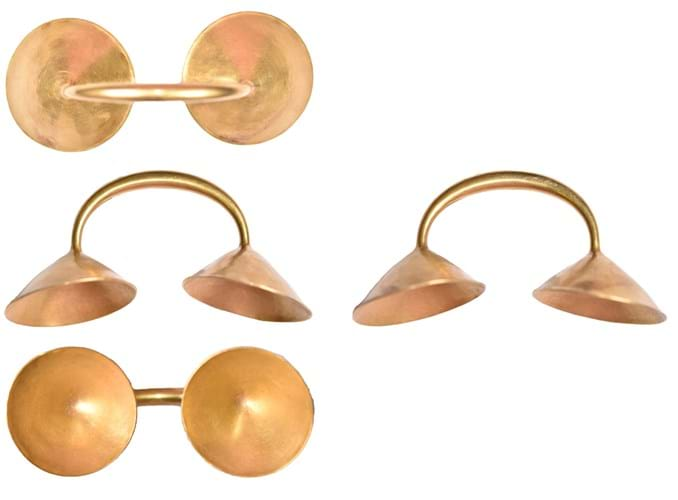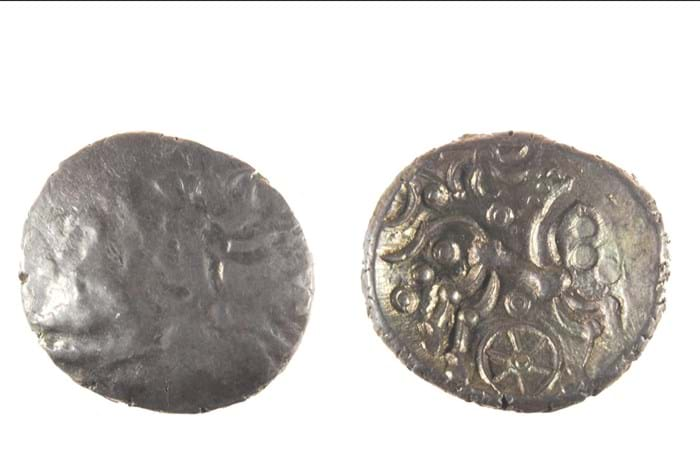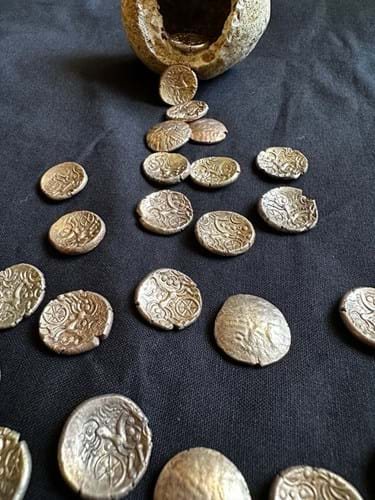
A view of a coin hoard found in a flint vessel in Berkshire. Image: ©The Trustees of the British Museum.
The figures are part of the latest Portable Antiquities Scheme (PAS) Annual Report for 2022, revealed this week by the British Museum.
The reports take a length of time for all the items to be reported and recorded and always have a time delay.
During 2022, 53,490 archaeological finds were recorded in total, up 17% on the previous year. Most objects were found by people metal detecting while a small proportion were found through mudlarking, which involves scouring muddy riverbanks for finds.
Michael Lewis, head of PAS and Treasure at the British Museum, said: “2022 was another successful year for the Portable Antiquities Scheme with a further 53,490 archaeological items recorded onto its database, bringing the total to almost 1.7m finds. Although finders are required to report Treasure most finds are reported on a voluntary basis, which makes this a truly remarkable contribution.”
The counties recording the most PAS finds in 2022 were Lincolnshire (5101), Norfolk (4265) and Suffolk (2727), while in terms of Treasure finds Norfolk (95), Hampshire (83) and Kent (81) had the highest numbers. Treasure finds were up by 27% on the previous year.
Most of the finds by metal detectorists were made on cultivated land where they otherwise could be lost to ploughing.
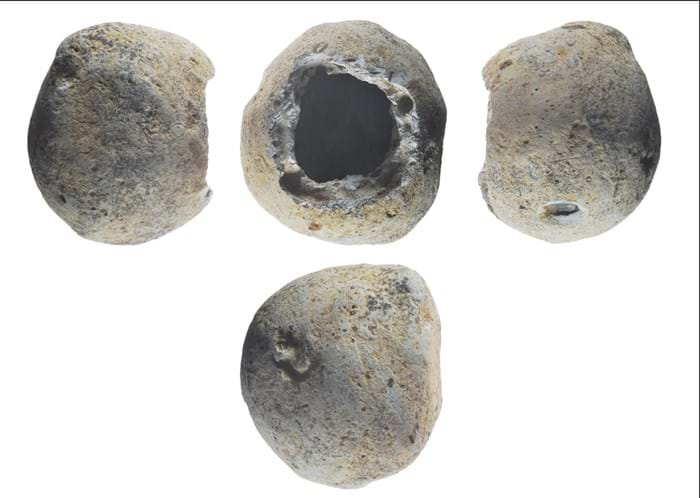
The flint vessel that contained a coin hoard found in west Berkshire. Image: ©The Trustees of the British Museum.
Mark Jones, interim director of the British Museum, said: “The British Museum is proud of its role managing the Portable Antiquities Scheme and overseeing the administration of the Treasure Act 1996 in England.
“The information about finds is being recorded by the PAS to advance knowledge of past peoples, where and how they lived. As such, it reflects every part of human history, from the palaeolithic to more modern times, across the whole of England and Wales. Most of the finds recorded have been found by members of the metal-detecting community and I wanted to especially thank them for recording these items with the PAS.”
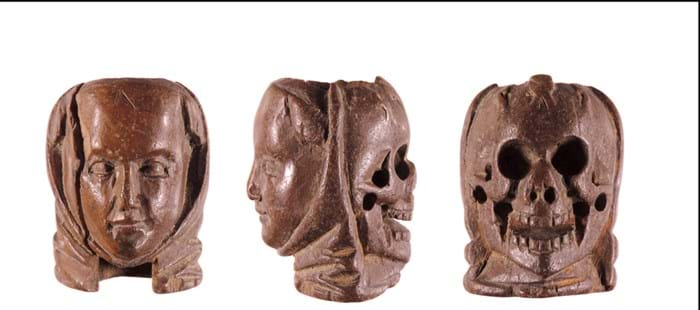
Views of a carved bone rosary bead found on the Thames foreshore at Queenhithe. Image: ©The Trustees of the British Museum.
Among the highlights in the report is a carved bone rosary bead of memento mori type, showing the face of a young woman (possibly intended to represent the Virgin Mary) on one side and a skull (representing mortality) on the other. It was found by Caroline Nunnely while mudlarking on the Thames foreshore at Queenhithe, City of London. As required under the conditions of her Port of London foreshore permit, Nunnely recorded the find with Stuart Wyatt, finds liaison officer for London.
Also featured is a 3000-year-old gold ‘dress fastener’ from Staffordshire. According to the report Irish smiths were producing some of the most exquisite goldwork in Europe. It may have been worn on the body to hold together the cloak, skirt, or dress of an important person. One of only seven discovered in England or Wales, the Staffordshire find is one of the best-preserved examples from Britain. It was found by Jonathan Needham while metal detecting and is likely to be acquired by a museum.
A hoard of 26 Iron Age gold coins found at East Garston, west Berkshire, has also been highlighted by the report. The coins were hidden inside a flint container. The gold coins are all staters, of a type locally produced in the east Wiltshire area in the late Iron Age (c.50 to 20BC). One side feature traces of an abstract design of crossed wreaths and the other features a horse running to the right with a spiral motif above and a wheel below.
PAS Annual Report 2022
In Numbers:
53,490 archaeological finds (up 17% on the previous year) including
1378 Treasure cases (up 27% on the previous year)
Lincolnshire, Norfolk and Suffolk had the most recorded finds
To date:
1.7m items have been recorded in The Portable Antiquities Scheme database


